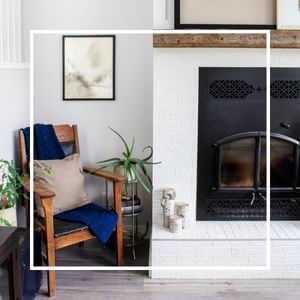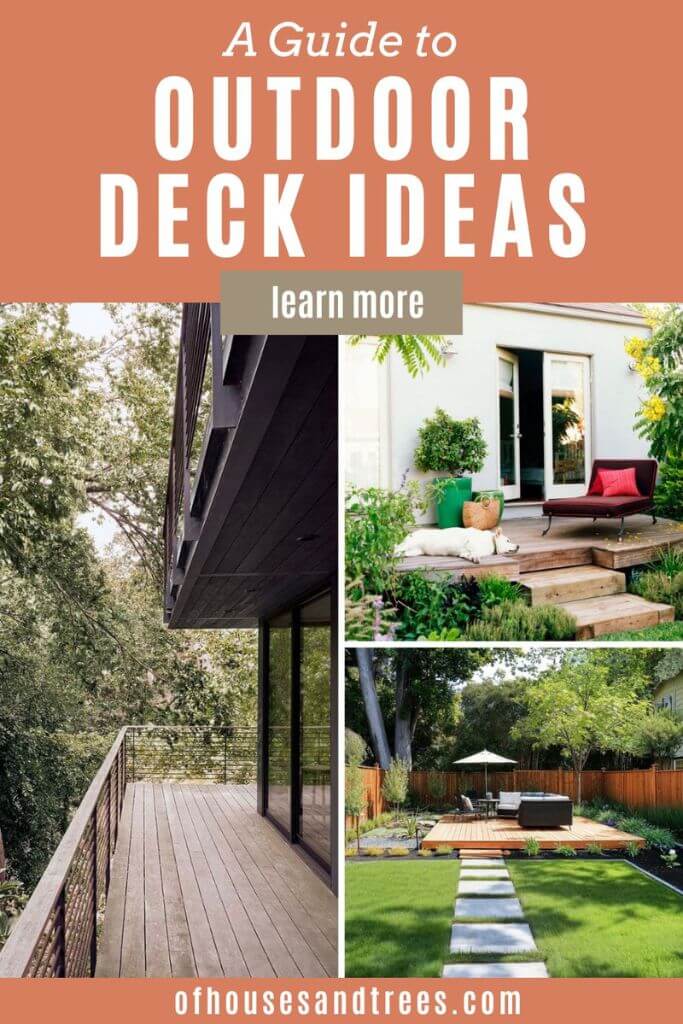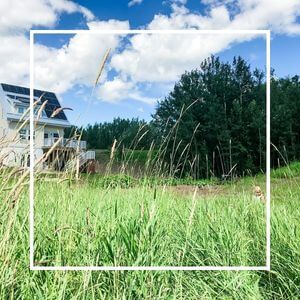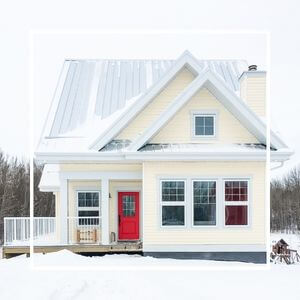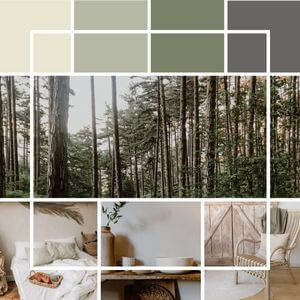What are the different deck types and which is the best one for your home? Great question! Let’s dive in to the wonderful world of outdoor decks – and explore some of the more eco friendly options too.
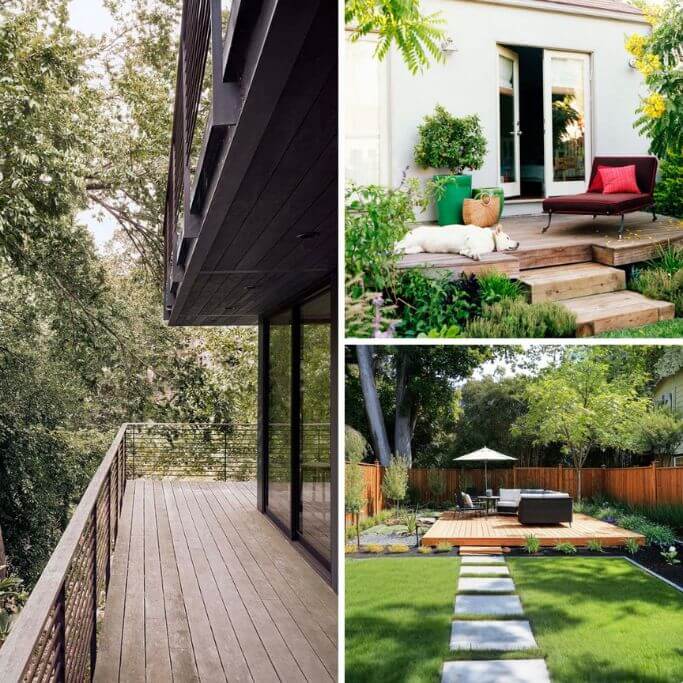
I don’t know about where you live, but where I live – if you have a house – then a deck is pretty much a must-have. And there are so many reasons why. Outdoor decks extend our living space and allow us to enjoy the world outside or home. Decks can be used as a dining space, a space to entertain friends and family, a place to relax or – if you’re an aspiring greenthumb like me – a place for all your plants!
As with so many things in the realm of home construction and renovation – there are just too many choices! The amount of outdoor space you have, as well as local bylaws, will help narrow down your deck size. But deck style, material choice and maintenance requirements are all going to factor into the equation as well. Plus, if sustainability is a priority of yours (and I hope it is), that’s another factor to consider.
But don’t be overwhelmed! Instead, just keep reading as I walk you through all the above considerations. Or, skip ahead if a particular section grabs your interest. Away we go!
Featured Video
5 Styles of Decks to Help Extend Your Living Space
Here’s a quick run through of the most common types of decks. Keep in mind people often combine different typess of decks and end up with a multi-level floating deck, or an attached wrap-around deck. There actually are a lot of options within just these five types!
Attached Deck
As the name suggests, attached decks extend off of your home. One of the main benefits is that they use the structure of your home for stability. However, this also means an improperly built attached deck can cause issues with your home. That being said, a well-done attached deck automatically makes your home feel bigger since you can literally walk outside and into another living space.
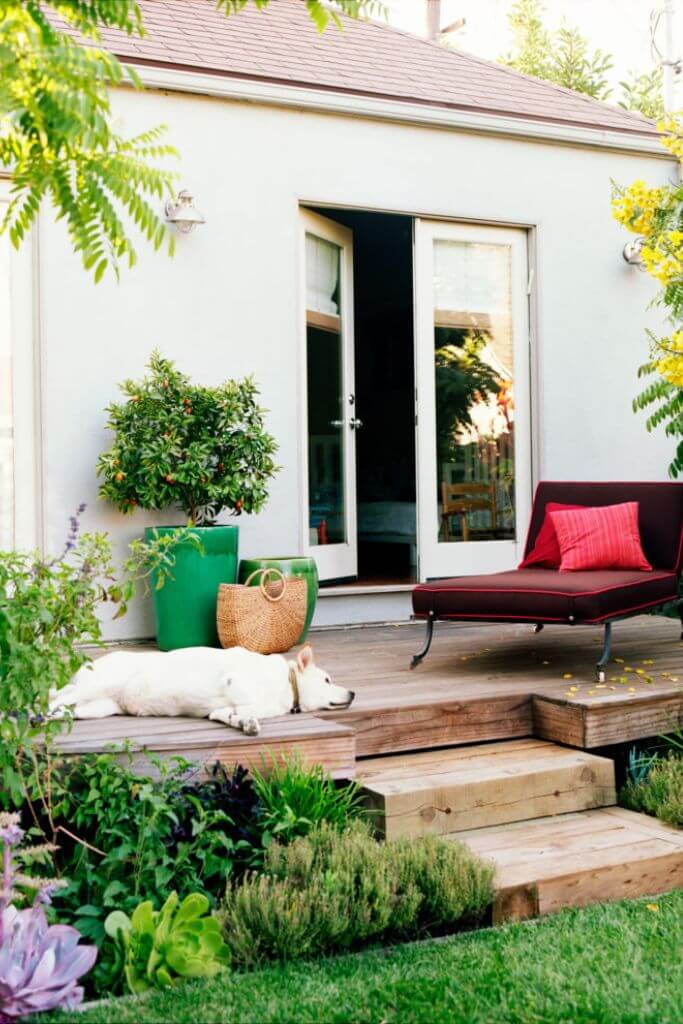
Floating Deck
A floating deck is typically set back from the home and is often accessed by a walkway. Because they are completely separate from the structure of your house, floating decks are an easier DIY project than an attached deck. This type of deck is often accompanied with features such as a pool or hot tub and create a separate outdoor living space away from the home that feels like more of an escape than an extension.
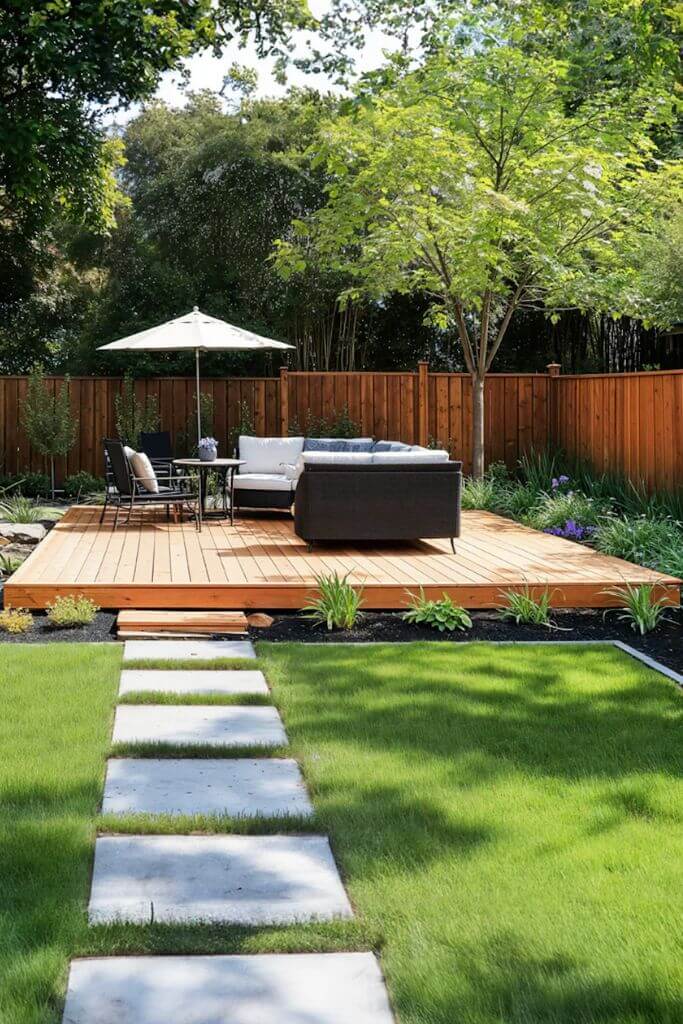
Multi-Level Deck
If you live on a hill (as we do), or if your yard is uneven or rocky, then a multi-level deck may be just the right fit. Multi-level decks usually consist of differently sized decks attached to each other with stairs. This helps to create different outdoor living areas that still feel connected, but can serve their own function. Often, this deck style combines multiple deck types – such as an attached deck with stairs leading down to a patio.
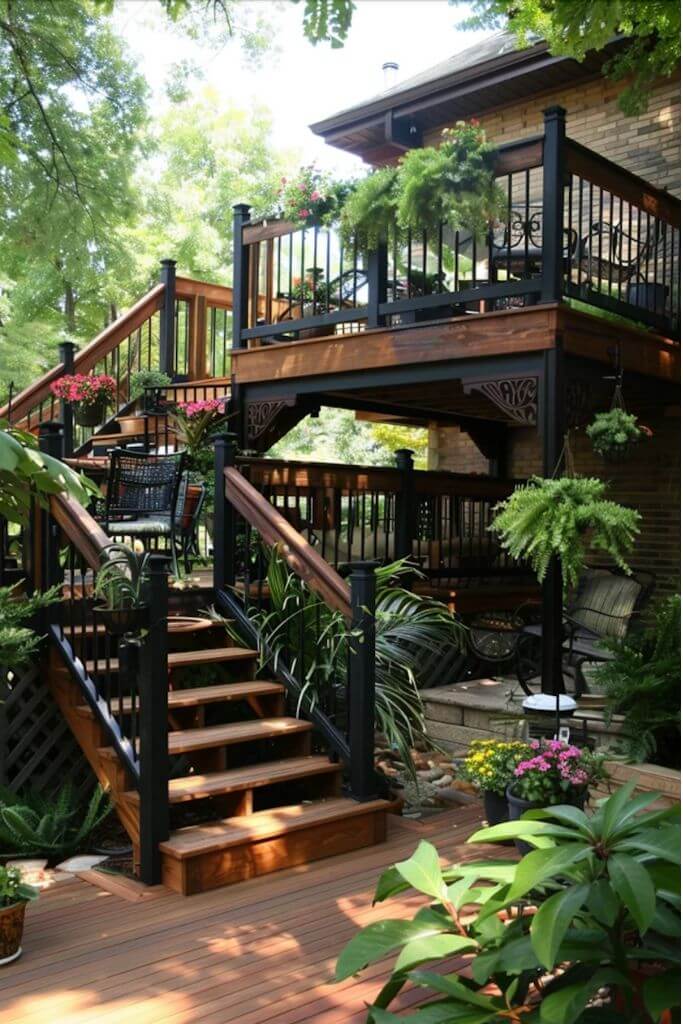
Wrap-Around Deck
If you have the space, then a wrap-around deck is an excellent choice. It offers plenty of opportunities to create smaller living areas for different functions. For example, one area could be for dining, another for casual seating, etc. As someone with this type of deck, I have to admit that there’s nothing like the feeling of walking around the outside your house on a sunny wrap-around deck with an ever-changing view.
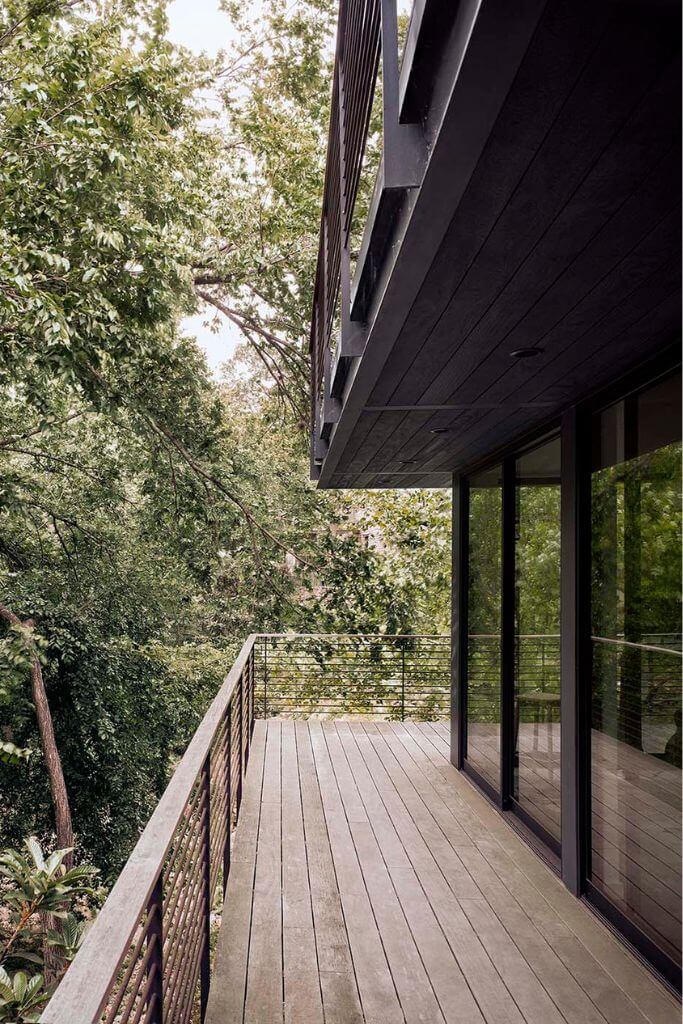
Patio
While technically a patio is different than a deck, they serve the same purpose so I wanted to include patios in this post. Whereas a deck is raised off the ground – even if it’s only a few inches, a patio is flush with the ground. That being said, people often use the terms interchangeably and that’s totally fine too!
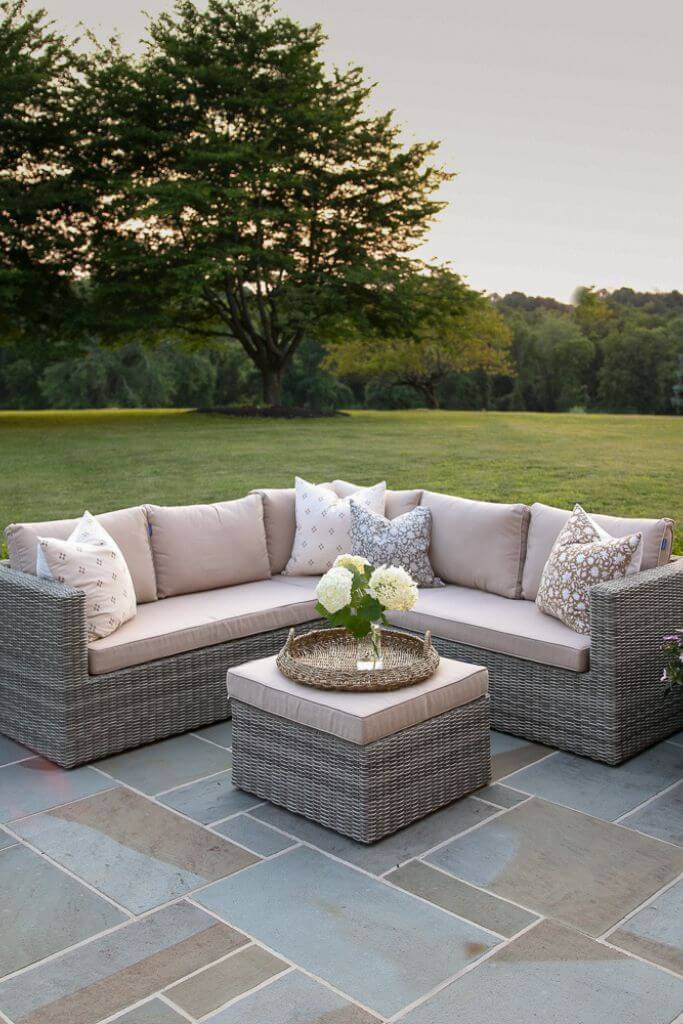
5 Different Types of Deck Material + Which is Most Sustainable
Just as there is a variety of types of decks for houses to choose from, there are a variety of material choices. From classic wood and stone to more modern materials, which one is best for you – and for the environment – depends on several factors.
Wood
An absolute classic, wood is beloved for its natural look and feel. Within the larger category of wood, there are a range of options to affordable, pressure-treated wood to high-end types of deck wood like redwood and cedar. The unfortunate downside of wood as a building material, which I talked about in my post on home siding types, is that it does require a fair amount of upkeep and can eventually warp or rot.
Make it Green: As a renewable resource, wood is a more sustainable option than other styles of decking, but that doesn’t mean it’s a perfect choice. Wood that is harvested using non-FSC methods can harm the forest long term, so it’s important that you look for types of wooden decks that are certified.
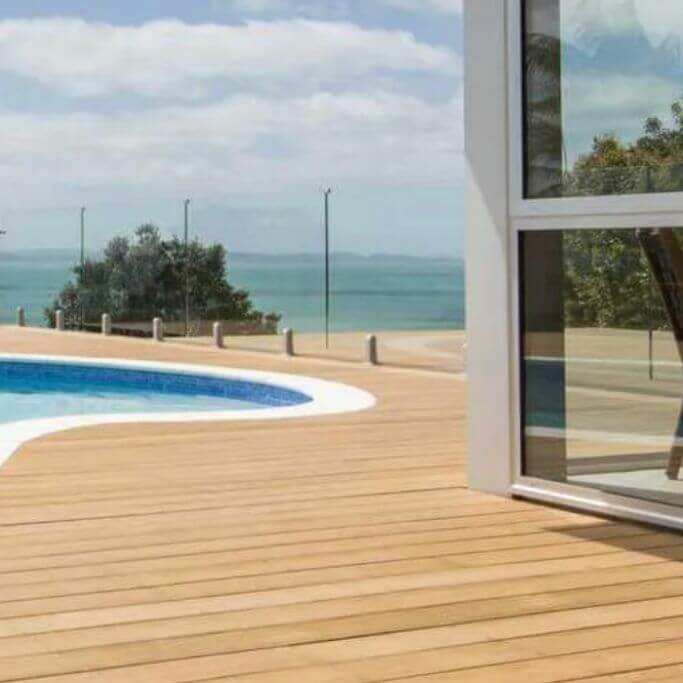
Composite
Composite is the most popular siding alternative to wood and it’s the most popular decking alternative to wood too. Why? Mainly, because of durability and maintenance. Typically made from a blend of wood and plastic, composite has the look of wood, but the longevity of manmade materials and is unlikely to warp, rot, splinter or even require upkeep at all.
Make it Green: If composite sounds too good to be true, then know that it’s the environment that takes the impact in situations like these. However, some brands create their composite decking products from recycled plastic and wood fibres, which is a much more sustainable option.
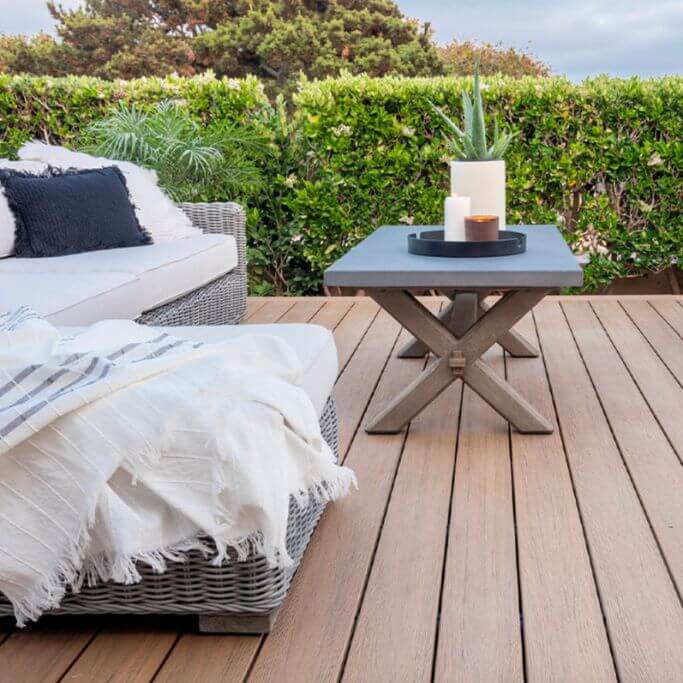
Stone
Because of their weight, stone decks are usually at ground level, meaning they’re best suited for a patio over a raised deck. Stone decks have that beautiful, natural look that blends really well into a home’s natural surroundings – even though you can buy stone that is either natural or manmade. Stone tends to be super durable, so decks made using this material require little to no maintenance.
Make it Green: There are as many choices within the stone decking world as there are in the wood one. A few common stone types used to build decks and patios include brick, flagstone, concrete pavers, tiles and all different types of cut stone, i.e.: limestone, granite, slate. Where you get your stone from will play a large role in its sustainability, as transporting heavy materials over long distances have high carbon footprints.
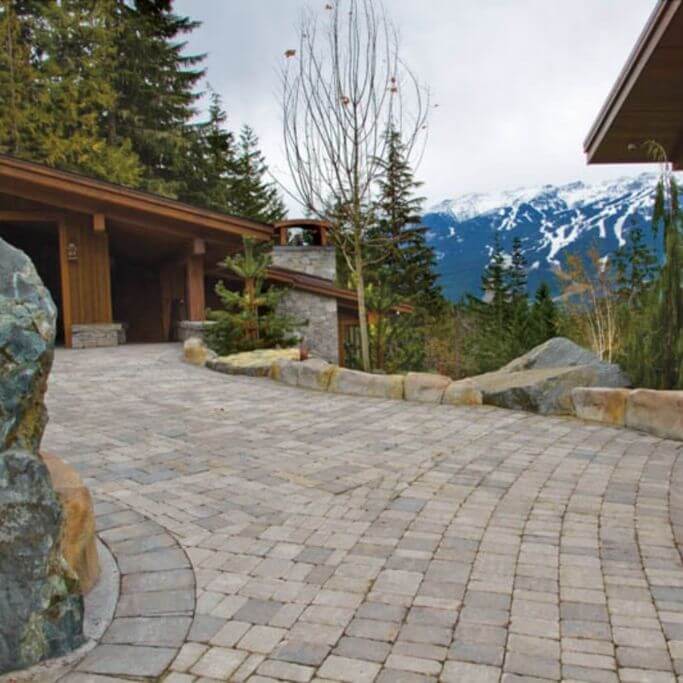
PVC
While composite materials are a mixture of natural and manmade materials, PVC (polyvinyl chloride or just vinyl for short) is 100% human-made. It’s positives are that it is highly durable, easy to maintain and affordable. It’s negatives? You guessed it – not a very eco-conscious choice. So would it surprise you to learn this is the type of deck material we have? Shocking, right? (If you want to know why we went with one of the least sustainable styles of decking out there, watch my video about some of the exterior materials we chose for our home.)
Make it Green: While recycled-content PVC exists, it’s more common to find “virgin PVC,” which manufacturers often argue is a better choice than PVC made from recycled materials because it is more durable. I wasn’t able to find a decking material made from recycled PVC, but if you are going to go with a vinyl deck – try and find something locally made to cut down on transportation emissions.
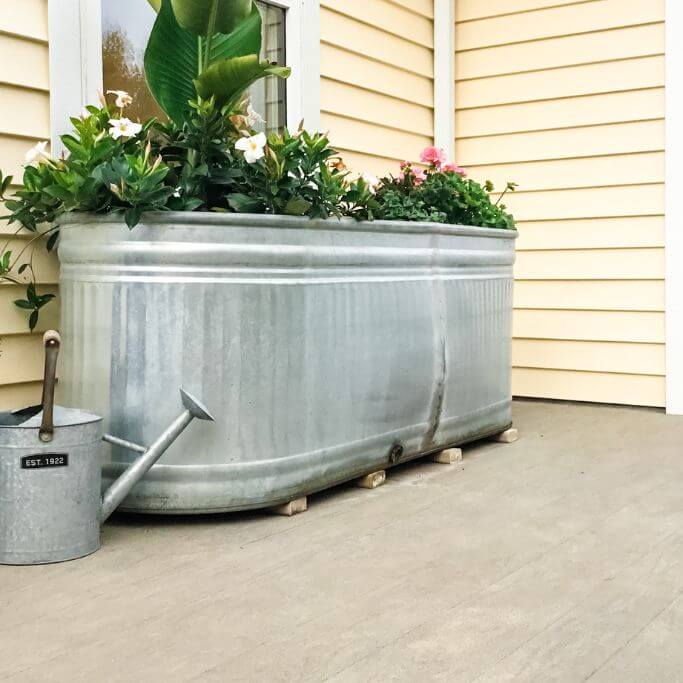
Aluminum
If you’re like I originally was when I found out about this option and and you’re picturing shiny tin-can deck boards, think again! Aluminum deck products are powder coated and often look just like any other type or deck material – with some even having a wood-like appearance. Aluminum deck boards are three to four times lighter than most wood decking, but are two to three times stronger.
Make it Green: Aluminum is often considered to be a sustainable building material because of it’s durability and end-of-life recyclability. Yes, metal-extraction is very energy-intensive, but some homeowners may feel that the longevity of an aluminum deck is worth it.
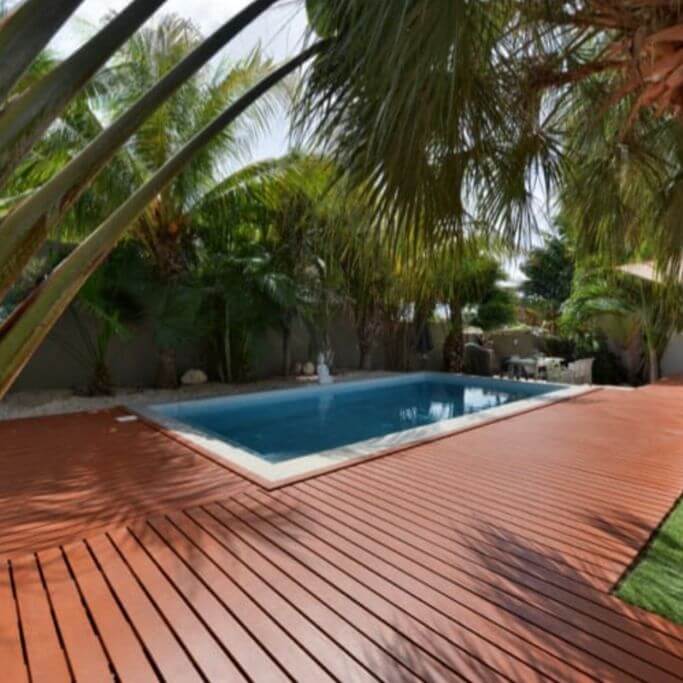
Now that you’re armed with all this information, it’s time to go forth and build a deck! Or… get a custom deck builder to do it for you. Because not everyone likes to DIY – and that’s okay!
CLICK TO SAVE FOR LATER!
Last Updated on October 14, 2024 (Originally Posted on August 2, 2024)
Former architectural technologist. Current treehugger.
I’m here to help you green your home – and your life.
Subscribe to the Of Houses and Trees monthly newsletter and I’ll send you my FREE list of “The 8 Best Places to Buy Eco-Conscious Decor Online.”
What on earth is sustainable design? Learn all about this eco-focused design method and read the latest posts about green architecture, interior design and decor.
Sustainable living is more than just a thing treehuggers talk about. It’s about making conscious choices everyday. Read the latest posts on living with the planet’s wellbeing always in mind.
Visit the Of Houses and Trees sustainable product directory and support brands trying to make a difference in the world.
Find out more about our 40 acres of land in Parkland County, Alberta and the sustainable home we built amongst the trees.
Need help creating the home of your dreams? Care about the planet? You’ve come to the right place! check out my affordable, sustainable e-design services.
Having a had time choosing paint colours? I’ve got you – and your walls – covered with an interior paint palette sure to compliment your home.
Have questions about creating an eco-conscious home? Go ahead – ask me! Sign up for one of my free online interior design consultations and ask me anything you want.
